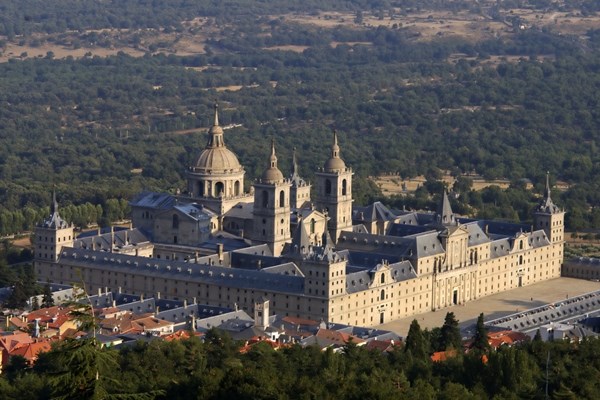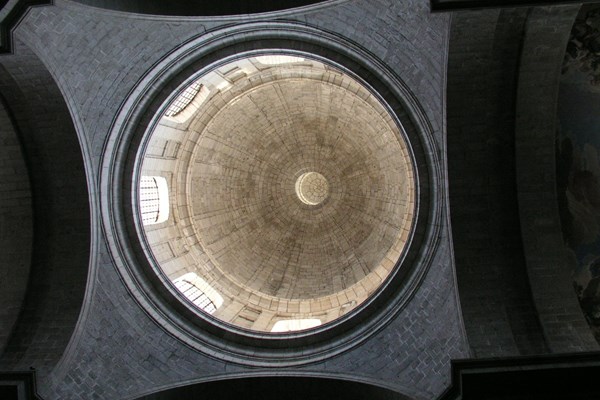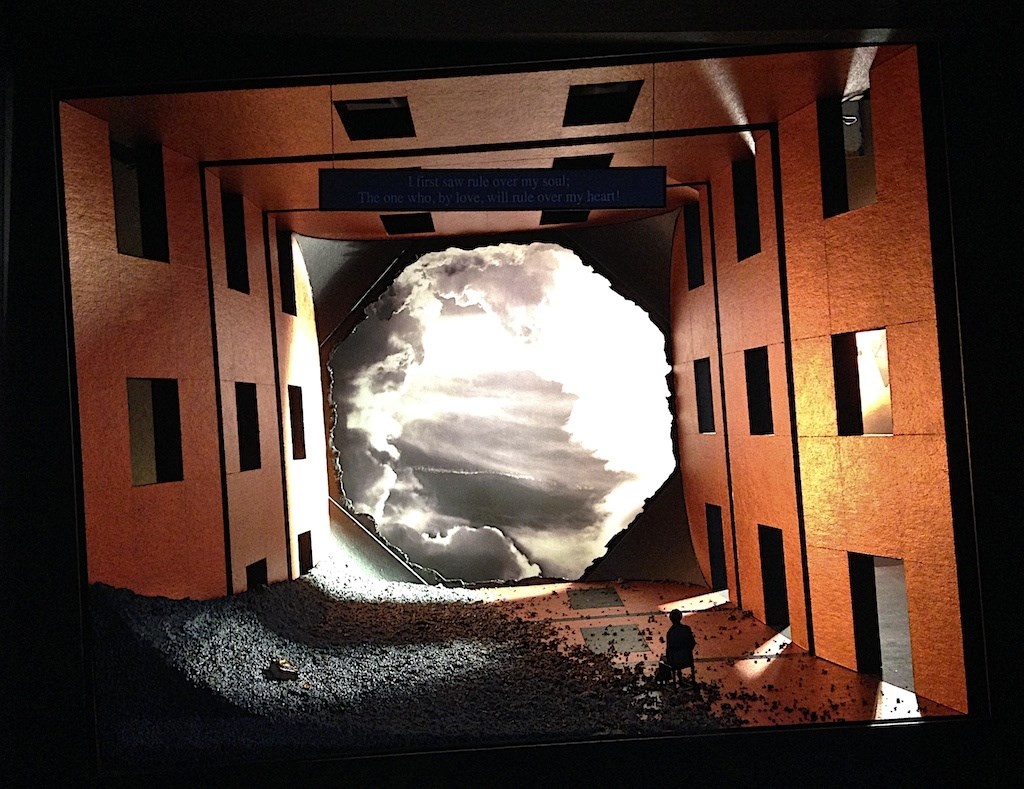Posted14 Apr 2015
- In
The inspired set of Don Carlo
Today at the Academy of Music, we began installing the set for our new production of Verdi’s Don Carlo. The set is inspired by the oppressive, repetitive architectural scheme of El Escorial (pictured), built by King Philip II in 1584. El Escorial was at the same time a monastery and a Spanish royal palace, representing the duality of church and state. In our design for the opera, we see one of the towers of the Escorial set on its side so that we are looking straight into its cupola, or dome, as if we were lying on the floor looking up. Its walls are a burnished coppery gold and its windows are black rectangles that feel like grave slabs in the floor of a church, or prison doors and windows. The cupola in the distance is a silvery ivory color – a symbol of hope, of escape, of Carlo’s love for Elisabeth and the dream that was Fontainebleau.


We spend the first half of the opera in this prison-like gilded cage of the Escorial. After the interval that follows the Auto da Fe, we see that the fires have wreaked havoc on the tower. The cupola is burned away completely, leaving only its charred black edges, revealing the gash of grey clouds in the sky beyond. Grey ash is banked up to one side of the room, with some chairs and burnt timbers buried in it. Philip sits alone amid the devastation, tortured with loneliness and jealousy; on the floor beside him is Elisabeth’s opened jewel box containing the portrait of Carlo that she treasures. This bleak, dark landscape is like a vision of the desert that Posa has described Spain as being in his first meeting with the King. It remains as we move from the King’s study to Carlo in prison and then to his final farewell with Elisabeth in the convent.

Don Carlo, a co-production with Washington National Opera and Minnesota Opera, opens on Friday, April 24, at the Academy of Music.
Comments are closed.

 Facebook
Facebook Twitter
Twitter More
More